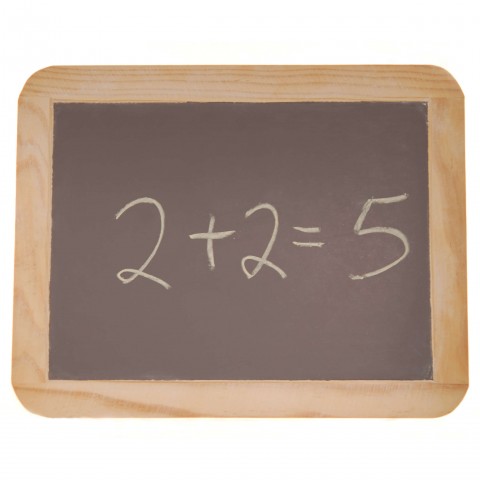
Making mistakes is a matter of course when learning a new language. It’s actually good to make a lot of mistakes, because as you learn from correcting them, you’ll deepen your understanding of the language.
There are many common mistakes in Japanese that are easy for new learners to make. This is due to Japanese honorifics (which are unfamiliar to many learners), the various forms of postpositional particles, different grammar structures than in English, and so on. Although it seems complicated at first, once you get used to the patterns, you’ll surely improve your skills and know how to correct yourself when you make a mistake in Japanese.
In this article, we’ll introduce the most common mistakes people make when learning Japanese. Being able to spot these mistakes in Japanese is a sure sign of improvement! Let’s get started here at JapanesePod101.com!
 Table of Contents
Table of Contents
- Common Japanese Pronunciation Mistakes
- Vocabulary Word Mistakes
- Word Order Mistakes in Japanese
- Japanese Grammar Mistakes
- Honorific Mistakes
- The Biggest Mistake
- Conclusion: How JapanesePod101 Can Help You Learn More Japanese

Mistakes help you learn.
1. Common Japanese Pronunciation Mistakes
Japanese pronunciation mistakes often trip up new learners, so we’ll be covering these first!
1 – Shortening Long Vowels
Shortening long vowels is one of the most common mistakes that Japanese learners make.
All of the Japanese sounds, called ひらがな (Hiragana), always end with a vowel, except for ん (n):
- あ(a)
- い (i)
- う(u)
- え(e)
- お(o)
When the same vowel sounds are next to each other, you pronounce it long.
Examples
- Mother: お母さん / おかあさん – oka・a・san = “o-kā-san” [pronounce “a” longer]
- Far: 遠い / とおい – to・o・i = “tōi” [pronounce “o” longer]
Please pay attention when you’re pronouncing a word, because shortening the vowel can change the word’s meaning. For example:
- おばあさん – oba・a・san = “o-bā-san” [pronounce “a” long, it means “grandmother” / “old woman”]
- おばさん – oba・san = “oba-san“ [pronounce “a” short, it means “aunt” / “middle-aged woman”]
2 – Pronouncing Imported Words with an English Accent
カタカナ (Katakana) is one of the Japanese writing systems. It’s used for Japanese words not covered by 漢字 (Kanji), especially for foreign language words—外来語 (Gairaigo), or loan words—transcribed into Japanese.
Most Japanese learners may think Katakana is very simple and easier to use than Kanji or even Hiragana. However, you need to be careful when it comes to pronunciation.
Although most of the foreign words can be written in Katakana, make sure you pronounce them the Japanese way!
Examples
- Hamburger: ハンバーガー (hanbāgā) = pronounce it as “ha・n・baa・gaa”
- Christmas: クリスマス (kurisumasu) = pronounce it without intonation
- Orange: オレンジ (orenji) = pronounce each Katakana, as in “o・re・n・ji”
- Ticket: チケット (chiketto) = pronounce consonants and following vowels
Please note that the following word pairs are written in the same Katakana, and are pronounced the same way.
- bath / bus: バス (basu) = pronounce each Katakana, as in “ba・su”
- track / truck:トラック (torakku)
- coat / court: コート (kōto) = pronounce “ko” longer.

ハンバーガー (hanbāgā), or “hamburger” = pronounce it as “ha・n・baa・gaa”
3 – Stressing the Wrong Syllables
More common Japanese language mistakes occur when a new learner stresses the wrong syllables of a word.
Examples
- waTAshi わたし
- KOnNIchiwa こんにちは
- DŌ iTAshi MAshite どういたしまして
- SUshi すし
- tenPUra てんぷら
Listen carefully to how native speakers pronounce Japanese words. You’ll notice that most Japanese words lack strong intonation, and are rather flat.
To check the pronunciation of Japanese words, listen to the audio for the 50 Most Common Nouns and Top 10 Hardest Words to Pronounce.
4 – Pronouncing the “R” Sound in Japanese Incorrectly
The Japanese syllabaries Hiragana and Katakana represent syllables and sounds that are totally different from the alphabet and its sounds. Some alphabet sounds can’t be precisely expressed in the Japanese syllabary.
Some of the most confusing sounds may be: ら・り・る・れ・ろ. These are written as “ra, ri, ru, re, ro” in alphabet letters. Keep in mind that you should not roll your tongue when pronouncing the Japanese “r.” It actually sounds closer to the “L” sound.
Examples
- glass: グラス (gurasu) = Even though the original word is “gLass,” it is “guRasu” in Japanese.
- apple: りんご (ringo) = It’s pronounced more like “li.”
- travel: 旅行/りょこう (ryokō) = You don’t roll your tongue to say “ryo.”
- rule: ルール (rūru) = It’s pronounced more like “lu・u・lu,” with the “u” in the middle pronounced longer.

Pay attention when you pronounce “ら (ra) 、り (ri) 、る (ru) 、れ (re) 、ろ (ro)”, such as in りんご (ringo), meaning “apple.”
2. Vocabulary Word Mistakes
Now we’ll go over a few common Japanese mistakes that learners make concerning vocabulary. Pay close attention!
1 – Saying “You” in Japanese
“You” in Japanese is あなた (anata). Unlike English, Japanese doesn’t usually use this pronoun during conversations. The subject or object in a sentence can usually be omitted, especially in casual situations.
Examples
- 窓を開けてくれますか。
Mado o akete kuremasu ka.
“Can (you) open the window?”
- これあげます。
Kore agemasu.
“(I) give (you) this.”
- マリの今日の服かわいいね。
Mari no kyō no fuku kawaii ne.
“Mari’s outfit today is pretty.” (instead of “Your outfit today is pretty.”)
Japanese people use the name of the person they’re speaking to instead of using “you.”
2 – Using the Wrong “I”
Personal pronouns in Japanese are rich in expression, especially the first- and second-person pronouns. There are dozens of expressions for “I,” depending on the gender, politeness, formality, and how you want to express yourself.
Using the wrong word for “I” in a given situation is one of the most common mistakes that Japanese learners make.
Examples
- “I am Kaori Tanaka.” [In a formal occasion when the subject is female]
Wrong: 俺は田中かおりです。(Ore wa Tanaka Kaori desu.)
Correct: 私は田中かおりです。(Watashi (or Watakushi) wa Tanaka Kaori desu.)
- “I am a student.” [In a casual occasion when the subject is male]
Wrong: あたしは学生です。(Atashi wa gakusei desu.)
Correct: 僕 / 俺は学生です。(Boku / ore wa gakusei desu.)
Following are the most frequently used first person pronouns.
| Reading | Kanji | Hiragana | Level of Formality | Gender | Characteristics |
| watakushi | 私 | わたくし | very formal | both | This is a very formal and polite personal pronoun that’s often used in official occasions. |
| watashi | 私 | わたし | formal / informal | both | This one is used by both genders in formal occasions, such as in the workplace. This is the most commonly used word for “I,” but it’s often omitted in sentences. In informal situations, this is typically used by women. |
| atashi | ー | あたし | informal | female | This is the casual version of watashi, and it’s used by younger females in conversations. However, it can sound a bit childish and unsophisticated. |
| boku | 僕 | ぼく | informal | male | This pronoun is used by males of all ages, but very often by kids and younger men. It gives an impression of humbleness. This can also be used as a second-person pronoun toward little boys (English equivalent: “kid”). |
| ore | 俺 | おれ | very informal | male | This is frequently used by men in informal settings, such as among family and friends. It sounds very masculine. This can be rude when it’s used in formal occasions or in front of respectable/senior people. |
3 – Using the Wrong Casual Language
There are some sentence-ending particles in Japanese which are colloquial expressions and used only in casual situations.
Some are feminine and used by females, such as:
- -よ (-yo)
- -わ (-wa)
- -わよ (-wa yo)
And some are masculine, such as:
- -ぜ (-ze)
- -だぜ (-da ze)
Such sentence-ending particles don’t have a particular meaning; they just add emphasis or a sense of femininity or masculinity.
Make sure you use the correct suffix, otherwise you’d sound very strange!
Examples
- “I cleaned it.” [When the subject is a man]
Wrong: 私が掃除したわよ。(Watashi ga sōji shita wa yo.)
Correct: 俺が掃除したぜ。(Ore ga sōji shita ze.) [it sounds a bit rough]
- “It’s okay!” [When the subject is a woman]
Wrong: いいぜ!(Ii ze!)
Correct: いいわよ!・いいわ! (Ii wa yo! / Ii wa!)

俺が掃除したぜ。(Ore ga sōji shita ze.) = “I cleaned it.” – in a masculine and slightly rough manner
3. Word Order Mistakes in Japanese
You probably know already that Japanese uses a different sentence structure and word order than English. Many Japanese language mistakes by English-speakers have to do with word order confusion.
1 – Japanese is SOV
The word order of Japanese sentences may be confusing for learners whose native language is an SVO type, because the Japanese sentence structure is SOV: S (subject) – O (object) – V (verb).
(S) (O) (V)
Japanese: Watashi wa ringo o tabemasu. 私はりんごを食べます。
(S) (V) (O)
English: I eat an apple.
When it comes to making a negative sentence, the word indicating negativity comes at the end of the sentence.
Japanese: Kyō watashi wa ringo o hitotsu mo tabemasen. 今日私はりんごを一つも食べません。
[Literal meaning] today / I / apple / any (even one) / eat / not
English: I did not eat any apples today.
Make sure you don’t get confused and try to say: Watashi wa tabemasen hitostumo ringo o kyō.
2 – Adjective + Noun
Another word order mistake is to place the adjective and noun incorrectly in a sentence.
Remember that adjectives always come in front of nouns in Japanese.
Make sure you don’t put adjectives after nouns like you would in other languages such as Italian (mela verde = “apple green”) or French (pomme verte = “apple green”).
Correct: 赤いりんご (akai ringo) = “red apple”
Wrong: りんご赤い (ringo akai) = “apple red”
Examples
- 安い靴 (yasui kutsu) = “cheap shoes”
- 寒い日 (samui hi) = “cold day”
- 丸い形 (marui katachi) = “round shape”
- 親切な人 (shinsetsu na hito) = “kind person”
- 静かな部屋 (shizuka na heya) = “quiet room”
4. Japanese Grammar Mistakes
Many new learners struggle with certain concepts of Japanese grammar, so pay close attention to avoid these mistakes yourself.
1 – Usage of Postpositional Particles
There are multiple positional particles in Japanese, and learning how to use them correctly can be a challenge.
Some particles are used for similar purposes, but it’s still important to know the distinction between them.
- は (-wa) and が (-ga)
は (-wa) is the topic marker particle. It’s placed after the word to be marked as the topic of a sentence, defining that word as a subject or an object.
- ➢ 彼は医者です。(Kare wa isha desu.) = “He is a doctor.”
➢ たかしは駅に行きます。(Takashi wa eki ni ikimasu.) = “Takashi goes to the station.”
On the other hand, the particle が (-ga) is the subject marker, which emphasizes the subject.
- ➢ 彼が医者です。(Kare ga isha desu.)
This is also translated as “He is a doctor,” but it has a nuance of “He is the one who is a doctor.”
➢ たかしが駅に行きます。(Takashi ga eki ni ikimasu.)
This is also translated as “Takashi goes to the station,” but it has a nuance of “It is Takashi who goes to the station.”
- で (-de) and に (-ni)
Both で (-de) and に (-ni) are used as locatives. However, there are many differences between them.
で (-de) is used as a locative particle, as well as an instrumental particle. When it’s used as a locative particle, it defines where an action or occurrence took place, especially those linked with active cases.
- ➢ 私は家で勉強します。
Watashi wa ie de benkyō shimasu.
“I study at home.”
➢ 彼は池で溺れた。
Kare wa ike de oboreta.
“He drowned in a pond.”
で (-de) is also used as an instrumental particle which can be translated as “using,” “by,” or “with.”
- ➢ まりこは箸でパスタを食べます。
Mariko wa hashi de pasuta o tabemasu.
“Mariko eats pasta with chopsticks.”
➢ その生徒はバスで大学へ行きます。
Sono seito wa basu de daigaku e ikimasu.
“The student goes to university by bus.”
On the other hand, the locative particle に (-ni) indicates a place or time, and it can be translated as “to,” “on,” “at,” or “in.” When used as a locative particle, it’s differentiated from で (-de) according to existence and passive cases. It’s also used when the result of an action or occurrence is being realized in that place.
- ➢ 彼は椅子に座った。
Kare wa isu ni suwatta.
“He sat on the chair.”
➢ 私は浅草に住んでいます。
Watashi wa Asakusa ni sunde imasu.
“I live in Asakusa.”
➢ 本は図書館にあります。
Hon wa toshokan ni arimasu.
“The books are in the library.”
➢ お昼におにぎりを食べました。
O-hiru ni onigiri o tabemashita.
“(I) ate Onigiri at lunch.”
2 – Differentiating Between いる (iru) and ある (aru)
Many foreign learners struggle to differentiate between いる (iru) and ある (aru), as both are translated as “there is (are)” in English.
The easiest way to differentiate them is to remember that いる (iru) is used for living things and ある (aru) is used for objects and living things which are already deceased.
The polite form of いる (iru) is います (imasu), and the polite form of ある (aru) is あります (arimasu).
- いる (iru)
➢ 台所に誰かがいる。
Daidokoro ni dareka ga iru.
“There is someone in the kitchen.”
➢ 豚が一匹庭にいる。
Buta ga ippiki niwa ni iru.
“There is a pig in the garden.”
➢ 彼らは今渋谷にいます。
Kare-ra wa ima Shibuya ni imasu.
“They are in Shibuya now.”
- ある (aru)
➢ 台所にテレビがある。
Daidokoro ni terebi ga aru.
“There is a TV in the kitchen.”
➢ 豚肉ステーキが冷蔵庫にある。
Butaniku sutēki ga reizōko ni aru.
“There is a pork steak in the fridge.”
➢ 渋谷にハチ公像があります。
Shibuya ni Hachikōzō ga arimasu.
“There is a statue of Hachikō in Shibuya.”

O 台所に誰かがいる。(Daidokoro ni dareka ga iru.) – “There is someone in the kitchen.
“X 台所に誰かがある。(Daidokoro ni dareka ga aru.)
3 – Past Tense of い (i)-Adjectives
There are two types of adjectives in Japanese: い (i)-adjectives and な (na)-adjectives.
い (i)-adjectives always end with the Hiragana character い (i). Examples include:
- 丸い (marui) – “round”
- 暑い (atsui) – “hot”
- 楽しい (tanoshii) – “fun”
な (na)-adjectives consist of adjectival nouns and a form of the copula な (na). Examples include:
- 親切な (shinsetsu na) – “kind”
- 穏やかな (odayaka na) – “mild” / “calm”
- 曖昧な (aimai na) – “vague” / “ambiguous”
Adding でした (deshita), which is the past tense of です (desu), makes an adjective polite.
Another common mistake in Japanese is often seen in the past tense of the copula (“be” / “is”). After い (i)-adjectives, this is a mistake; however, it’s okay to do so in the case of な (na)-adjectives.
Instead, conjugate い (i)-adjectives to the “adjective stem + かった (-katta)” form for the past tense.
Examples
- “It was difficult.” [present tense of “difficult” : 難しい (muzukashii)]
Wrong: 難しいでした。(Muzukashii deshita.)
Correct: 難しかった。(Muzukashikatta.)
- “She was beautiful.” [present tense of “beautiful” : 美しい (utsukushii)]
Wrong: 彼女は美しいでした。(Kanojo wa utsukushii deshita.)
Correct: 彼女は美しかった。(Kanojo wa utsukushikatta.)
5. Honorific Mistakes
The honorific language is another source of confusion and Japanese mistakes for learners.
While it’s generally adequate to be able to use the basic polite form for daily life, it’s good to learn 敬語 (Keigo) to deepen your understanding of the Japanese language. Even if you don’t use them, you’ll hear a lot of honorifics as a customer in Japanese stores and restaurants.
Japanese Keigo has three forms of respectful speech, which are:
- 丁寧語 (Teineigo) – polite language
- 尊敬語 (Sonkeigo) – respectful language
- 謙譲語 (Kenjōgo) – humble language
Being able to use the appropriate honorifics is considered good manners for adults in Japan, especially at work and in many social situations.
- 丁寧語 (Teineigo) – polite language
This is used to express things politely. It’s used for any person and in any situation.
- 尊敬語 (Sonkeigo) – respectful language
This is used to show respect by expressing things that heighten action, status, or things of other people. It’s used when talking about someone superior to you, clients, and customers. Do not use this to talk about yourself.
- 謙譲語 (Kenjōgo) – humble language
This is used to show respect by expressing things that lower/humble yourself in comparison to the other person. It’s used to tell someone about your action or status. Do not use this to talk about another person.
The following is a list of frequently used verbs of honorifics in the present tense.
| English | Basic Verb | 丁寧語 Teineigo (polite language) | 尊敬語 Sonkeigo (respectful language) | 謙譲語 Kenjōgo (humble language) |
| do | する suru | します shimasu | なさいます nasaimasu | いたします itashimasu |
| say | 言う iu | 言います iimasu | おっしゃいます osshaimasu | 申します/ 申し上げます mōshimasu / mōshiagemasu |
| go | 行くiku | 行きます ikimasu | いらっしゃいます irasshaimasu | 参ります / 伺います mairimasu / ukagaimasu |
| come | 来る kuru | 来ます kimasu | いらっしゃいます / おいでになります irasshaimasu / oide ni narimasu | 参ります mairimasu |
| know | 知る shiru | 知ります shirimasu | お知りになります / ご存じです o-shiri ni narimasu / gozonji desu | 存じます zonjimasu |
| eat | 食べる taberu | 食べます tabemasu | 召し上がります meshiagarimasu | いただきます itadakimasu |
| be | いる iru | います imasu | いらっしゃいます irasshaimasu | おります orimasu |
| see / look | 見る miru | 見ます mimasu | ご覧になります goran ni narimasu | 拝見します haiken shimsu |
| give | あげる ageru | あげます agemasu | おあげになります o-age ni narimasu | 差し上げます sashiagemasu |

To customers/clients : 感謝申し上げます。(Kansha mōshiagemasu.) – “I tell you thank you.” [in a respectful way]
6. The Biggest Mistake
What is the biggest mistake when learning Japanese?
Yes, the biggest mistake is to be afraid of making mistakes!
Speak and practice proactively over the course of your studies. When you make mistakes, you’ll improve your Japanese skills by correcting those mistakes.
When you don’t know something and wonder what it is and how it works, don’t hesitate to ask!
- 聞くは一時の恥聞かぬは一生の恥
Kiku wa ittoki no haji, kikanu wa isshō no haji
This is the famous Japanese proverb for learners. It means: “The man who asks a question is a fool for a minute; the man who does not ask is a fool for life.”
The direct translation is: “Asking is shameful temporarily; not asking is shameful for life.”
As the Japanese culture is one of shame, honor, and collective harmony, the proverb uses the word 恥 (haji), meaning “shame” for a life lesson. It’s more shameful to not ask and be ignorant for the rest of your life than it is to ask and learn.
7. Conclusion: How JapanesePod101 Can Help You Learn More Japanese
In this article, we introduced the ten most common mistakes students make when learning Japanese. Whether you’re a beginner or advanced learner, this information will surely deepen your understanding and help you improve your Japanese skills!
If you would like to learn more about the Japanese language, you’ll find a lot more helpful content on JapanesePod101.com. We provide a variety of free lessons to help you improve your Japanese language skills.
Here’s some more information about the basics of Japanese to enrich your knowledge:
Please don’t forget to check out the audio and listen to the pronunciation carefully!
And there’s so much more waiting for you! Learn faster and enjoy studying Japanese at JapanesePod101.com!
Before you go, let us know in the comments how many of these mistakes you’ve made before, and how you overcame them. We look forward to hearing from you!










